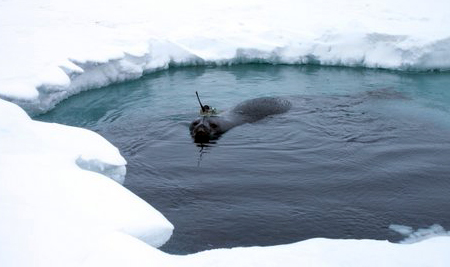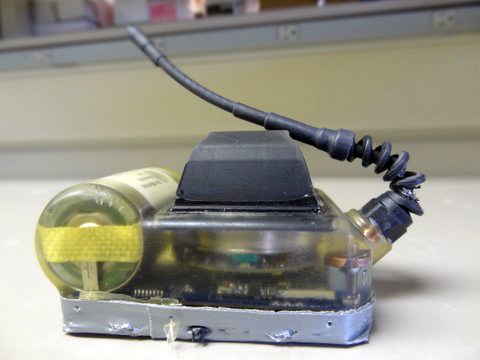|
Page 2/2 - Posted September 28, 2012
Study combines ecology and oceanography to understand seal behaviorAbout half of the animals come from a group of seals in Erebus Bay near McMurdo Station — a population that has been studied for more than four decades by other researchers, offering Burns and her colleagues a rich life history for each animal they tag. The other Weddell seals used in the study are located farther north along the Victoria Land coast, which the scientists reach by helicopter. So far, the tags have recorded more than 200,000 dives and 7,800 conductivity, temperature and depth profiles, according to Goetz. The data show the seals sticking to the coast in the summer before moving out farther into the Ross Sea as winter approaches. “We know they use their environment differently across seasons,” Goetz said. For Burns, the current project has provided her an opportunity to see if the seals are using the environment differently than they were 20 years ago when she was a graduate student and working with J. Ward Testa Testa and his team had outfitted 26 adult female Weddell seals with satellite tags in the early 1990s. The heavy metal tags had weighed more than two kilograms, and the rubber seals would sometimes fail, flooding the instrument. Still, the project offered enough data for Burns to compare against the present-day study. She found that two decades ago the seals favored remaining closer to Ross Island in winter than they do today. Also, while there was no difference in dive depth or duration, the seals seemed to spend about 25 percent more time at the bottom of their dives 20 years ago than today, while enjoying longer surface intervals between dives. “Foraging efficiency was also significantly higher in the 1990s versus the 2010s,” Burns said. In the winter, only two seals went farther than 50 kilometers away from Ross Island during the Testa project. In contrast, all but two seals from the current study traveled farther than 50 kilometers of where the Erebus Bay population breeds in the summer. “A larger fraction of the population is moving out of the Erebus Bay region in winter now as compared to two decades ago,” Burns said. The reasons behind that behavior are still being analyzed, but some answers may come from the oceanography data that Hofmann and her team are teasing out of the satellite tag data loggers. For example, the seals seem to frequent parts of the water column near where warmer circumpolar deep water (CDW) reaches toward the surface. Those tend to be areas of higher biological productivity — in other words, a biological hot spot that may offer good hunting. Hofmann noted that the seals are offering an invaluable, high-resolution window into the Ross Sea, often frequenting the same locations for days or weeks at a time. That means numerous profiles of the same area. While the technique of outfitting marine mammals to collect data on the physical properties of the ocean isn’t new, this is the first time it’s been used in the Ross Sea. “The big thing we’re getting from the animals is a view of the seasonal progression of the upper water column,” Hofmann explained, adding that oceanography data allows the researchers to calculate the amount of heat in the top several hundred meters. The heat content is important to the formation and dissolution of the seasonal sea ice, which is sensitive to episodic changes in ocean and atmospheric circulation. The Weddell seals are also helping improve circulation models for the Ross Sea, confirming some assumptions and revealing gaps, particularly in event-scale phenomena, such as storms. “The seal data has been real important for refining the circulation model we’re running for the Ross Sea,” Hofmann said. “I think we’ll have a much better understanding of variability in the Ross Sea. It’s really the variability that’s important in trying to understand climate change.” NSF-funded research in this story: Jennifer Burns, University of Alaska Anchorage, Award No. 0838892 |



For USAP Participants |
For The Public |
For Researchers and EducatorsContact UsNational Science FoundationOffice of Polar Programs Geosciences Directorate 2415 Eisenhower Avenue, Suite W7100 Alexandria, VA 22314 Sign up for the NSF Office of Polar Programs newsletter and events. Feedback Form |



